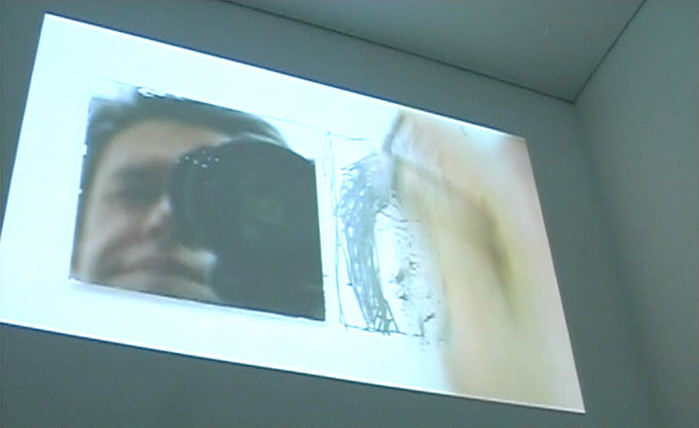Eraserhead
Eraserhead 2002, digital video, 4:59,
Part of Winter Night Screening Program 2015,
Curated by Catherine Connolly, Counihan Gallery Brunswick.
Originally exhibited RMIT Project Space , 2002.

Alternative ways of making art can be gimmicky, mere style or a cool way of scorning convention. At their best, however, alternative ways of making art seek alternative ways of understanding reality.
When Leslie Eastman does a drawing while looking through a video camera, you might think that it's just a trick to be different, a cynical ruse to mystify the directness of drawing and insinuate a whole lot of complication. It's as if drawing through the camera obfuscates the simple medium and makes it look like contemporary art.
In Eastman's video at the RMIT Project Space, you see the artist in a mirror with one eye closed behind the camera. On the other side of the screen you watch him drawing what he - and the spectator - is looking at, namely himself and the camera lens. The square he defines for the drawing is the same size as the mirror.
The actions of drawing are speedy and sometimes the tape plays backwards, so the pencil seems to undo the lines.
When a satisfactory rendering is achieved, the pencil becomes manic, and finally the artist rubs the whole thing out.
It's a bit like seeing Velazquez' Las meninas in reverse. You are, momentarily, the person being depicted; but it's an illusion, for the camera looks into a mirror, revealing the artist himself as the necessary subject of his self-portrait. It's a witty allegory of Western picture-making, which always assumes a point of view that you share (like the thrones of king and queen in the Velazquez) even though you stand on a gallery floor looking at a flat plane.
Eastman's way of looking through a camera isn't done to improve the quality of the drawing. The work is theatrical: the focus isn't on the rendering, but your involvement in the performance.
Robert Nelson
The Age Newspaper
September 7 2002